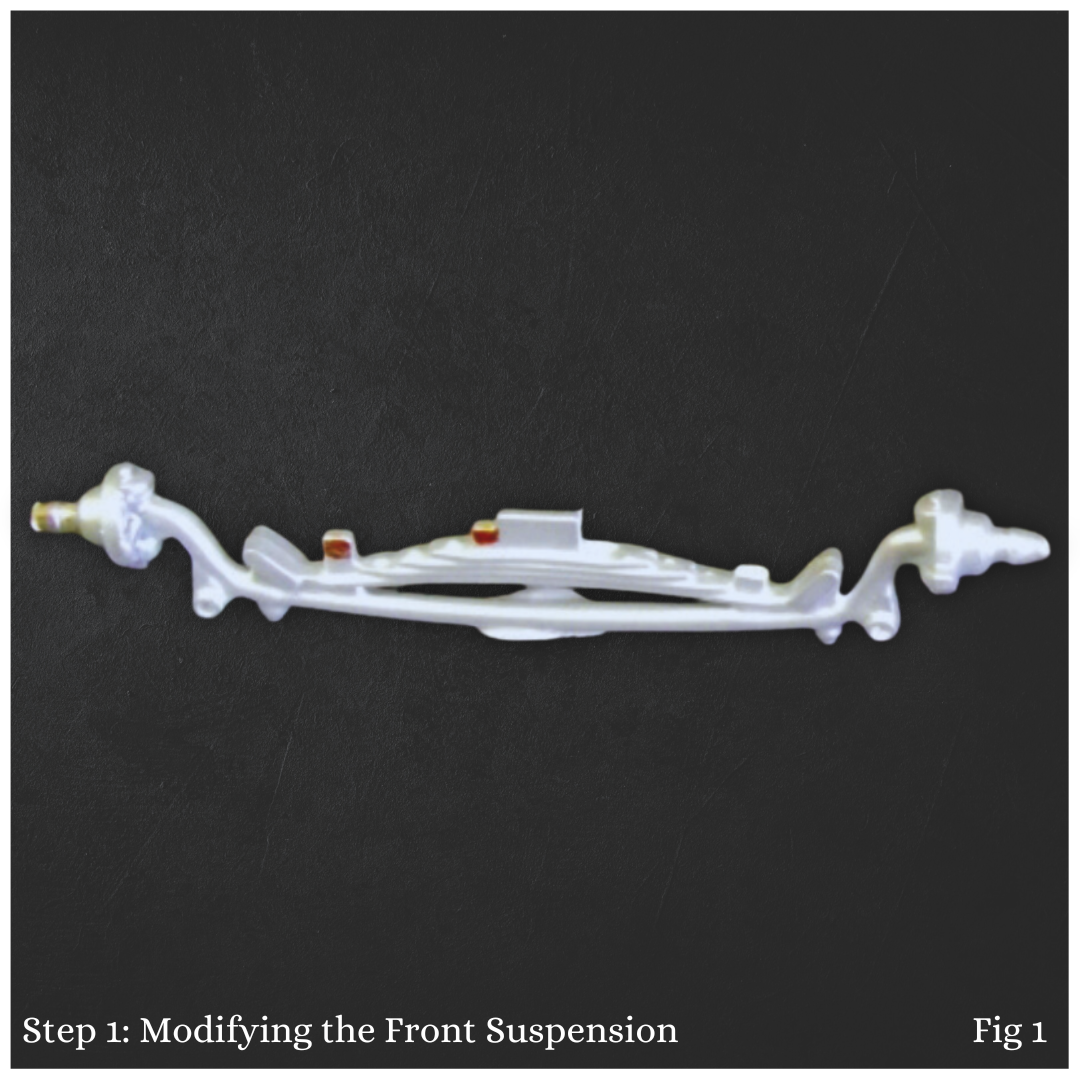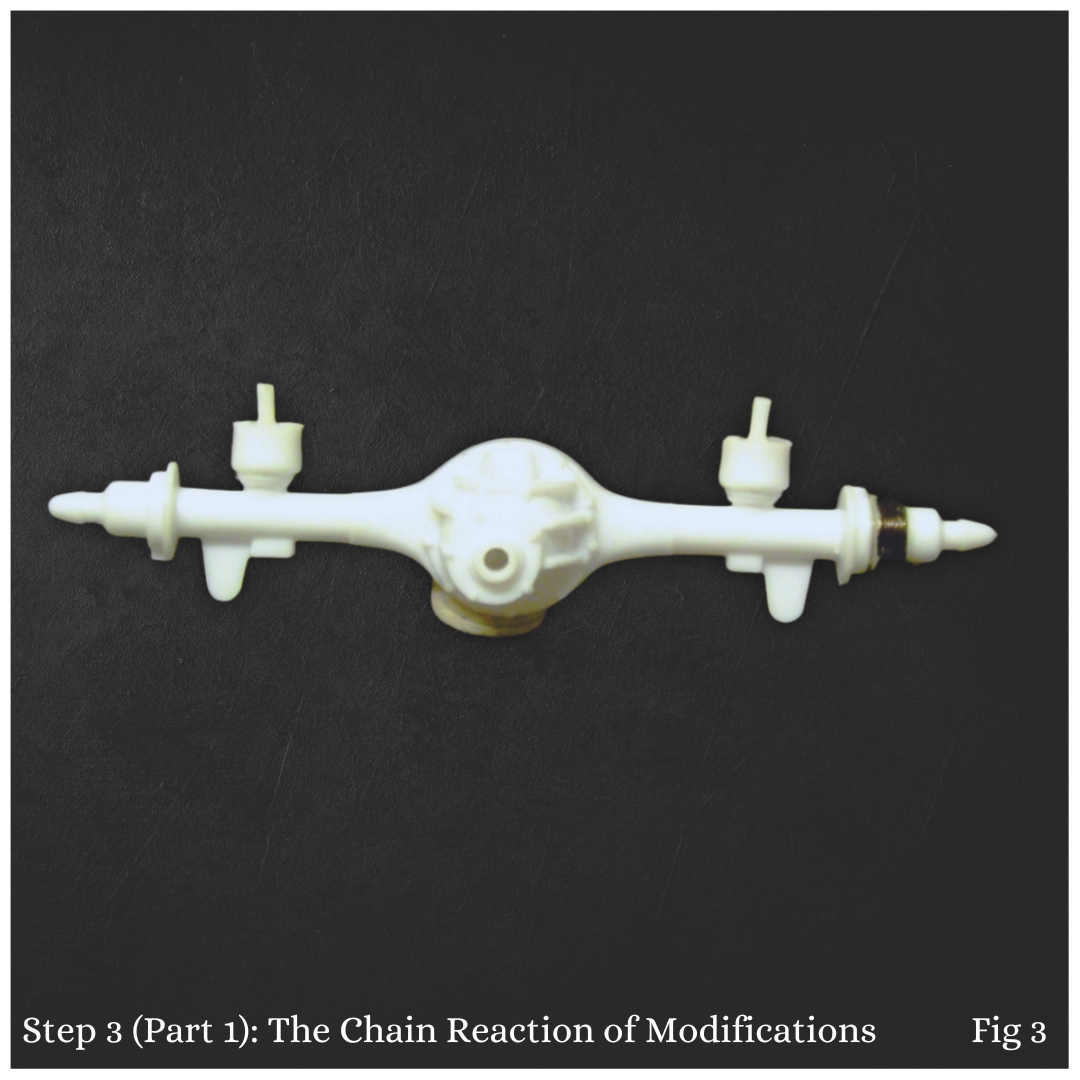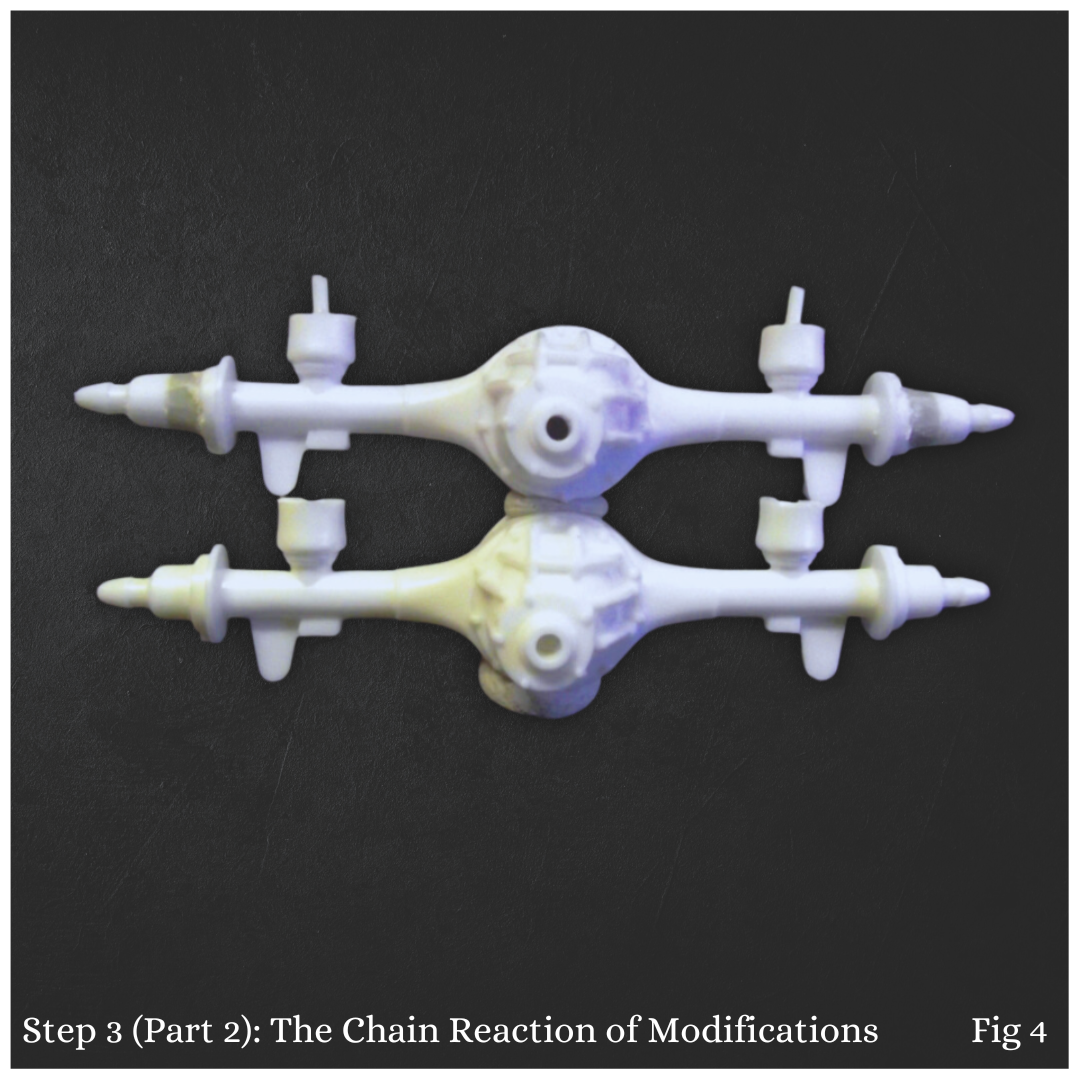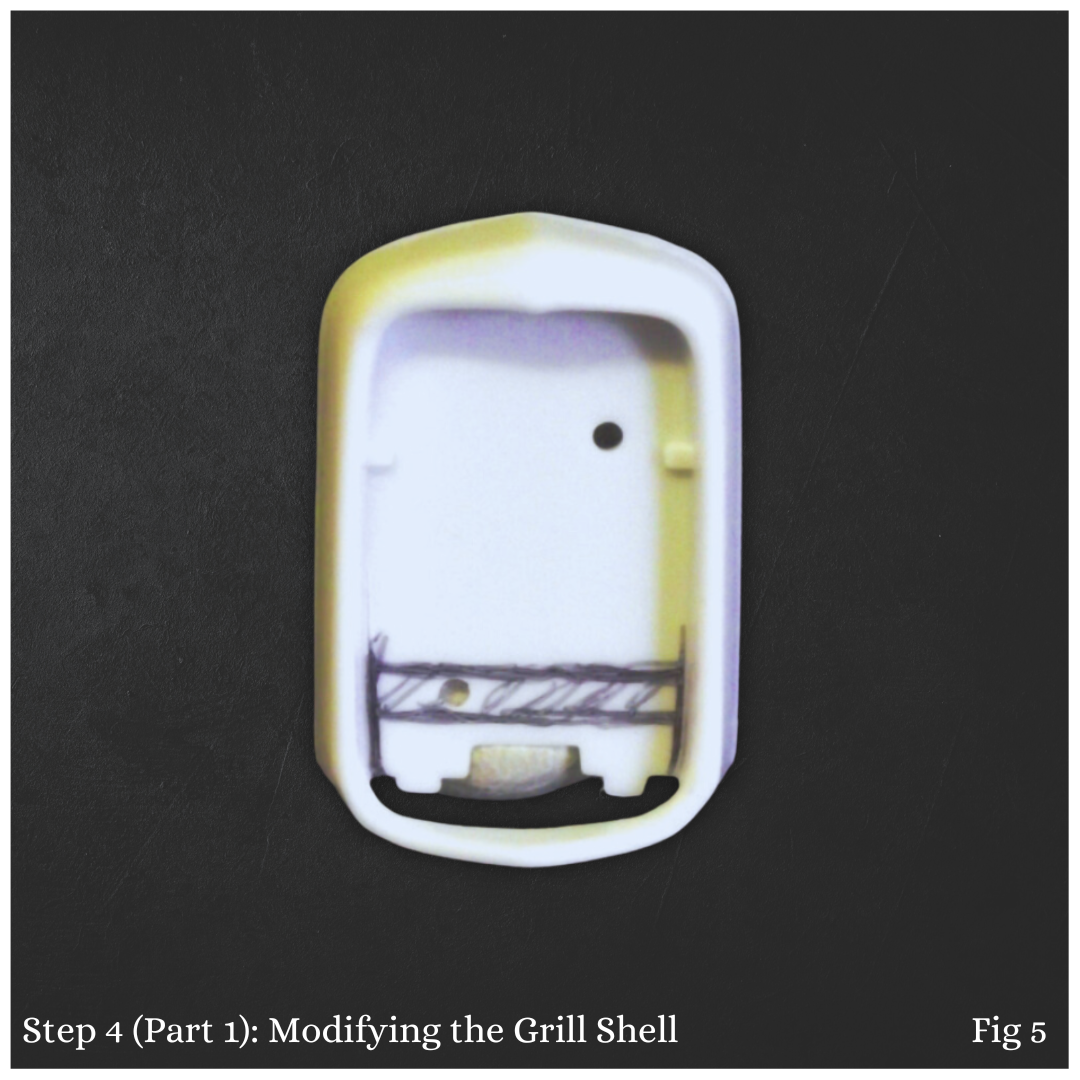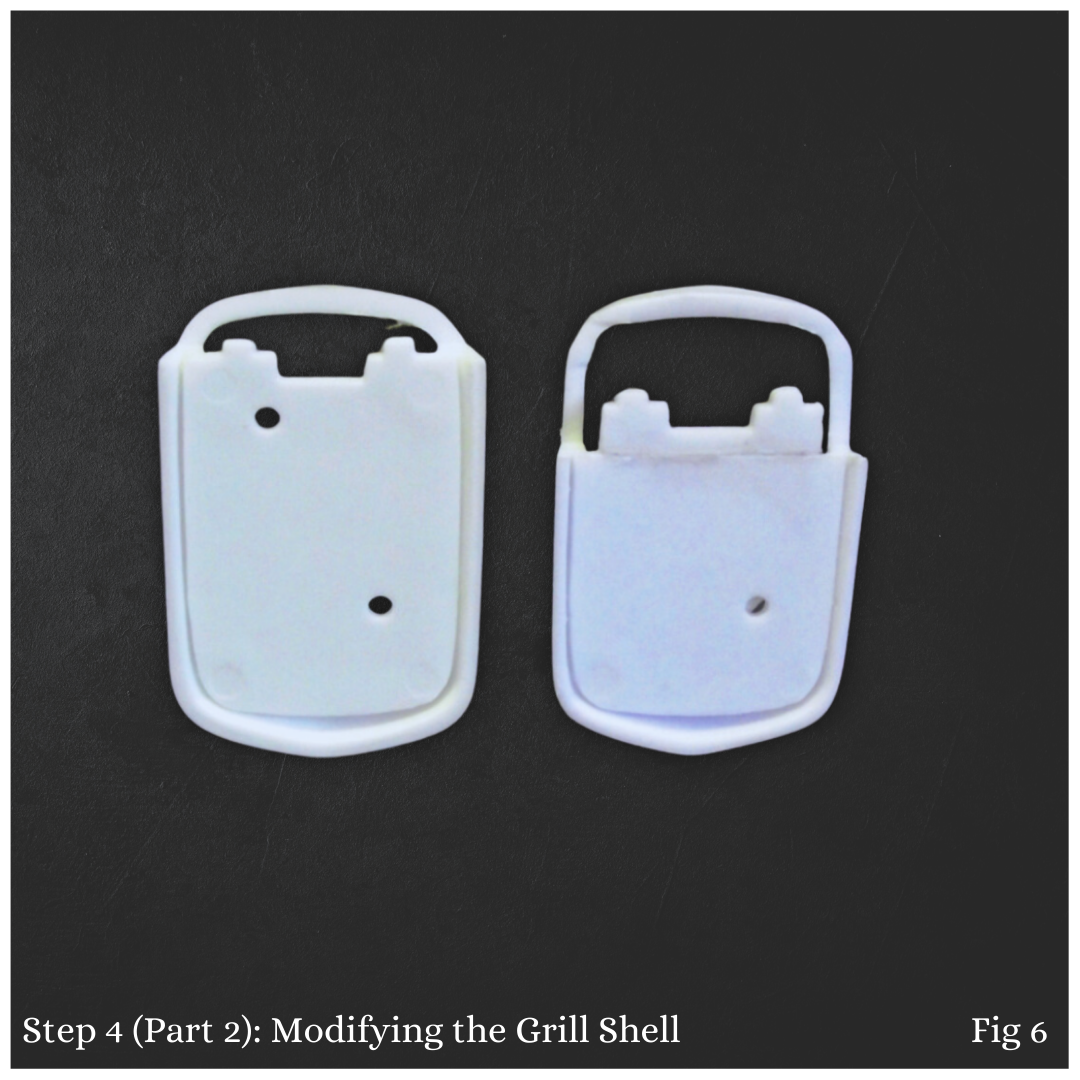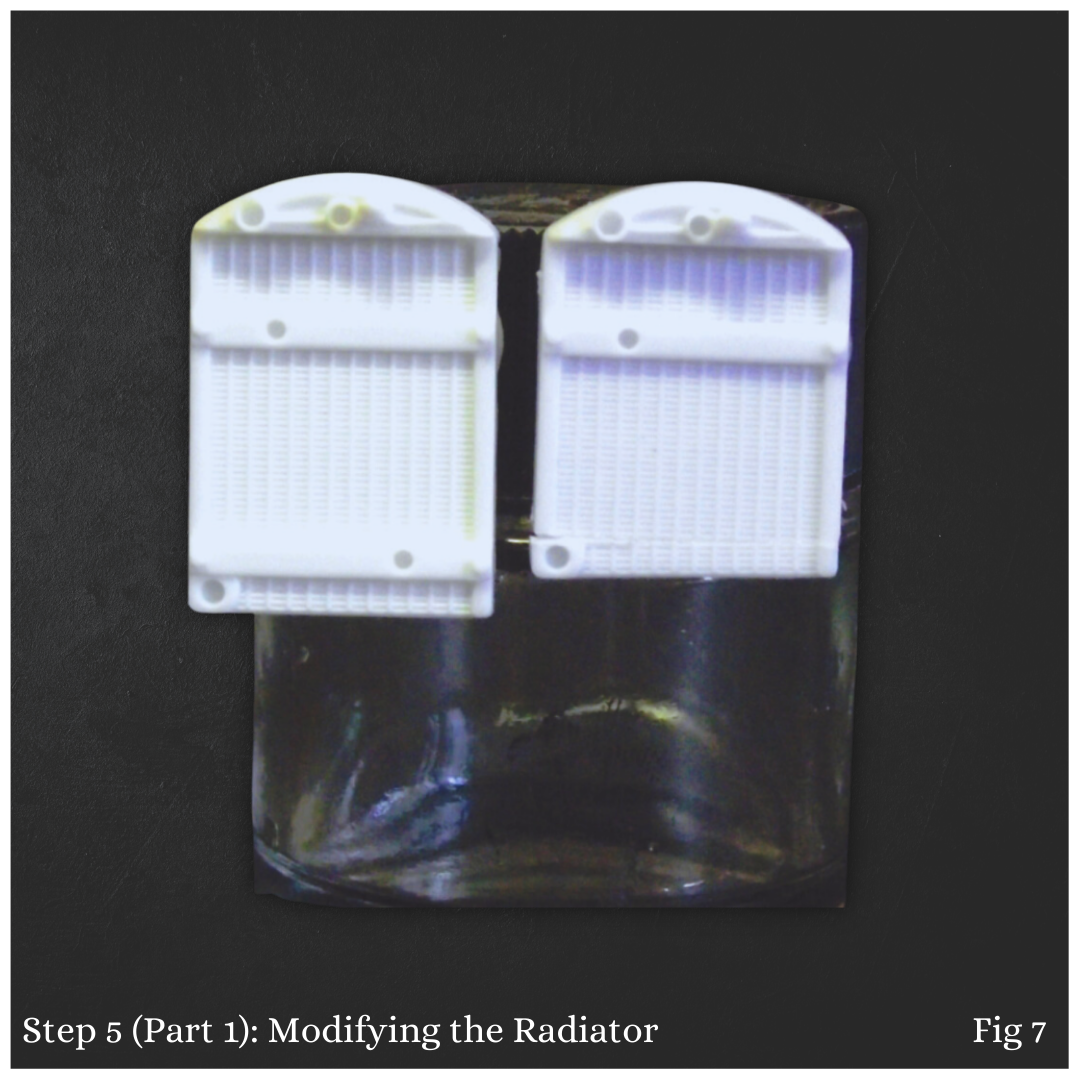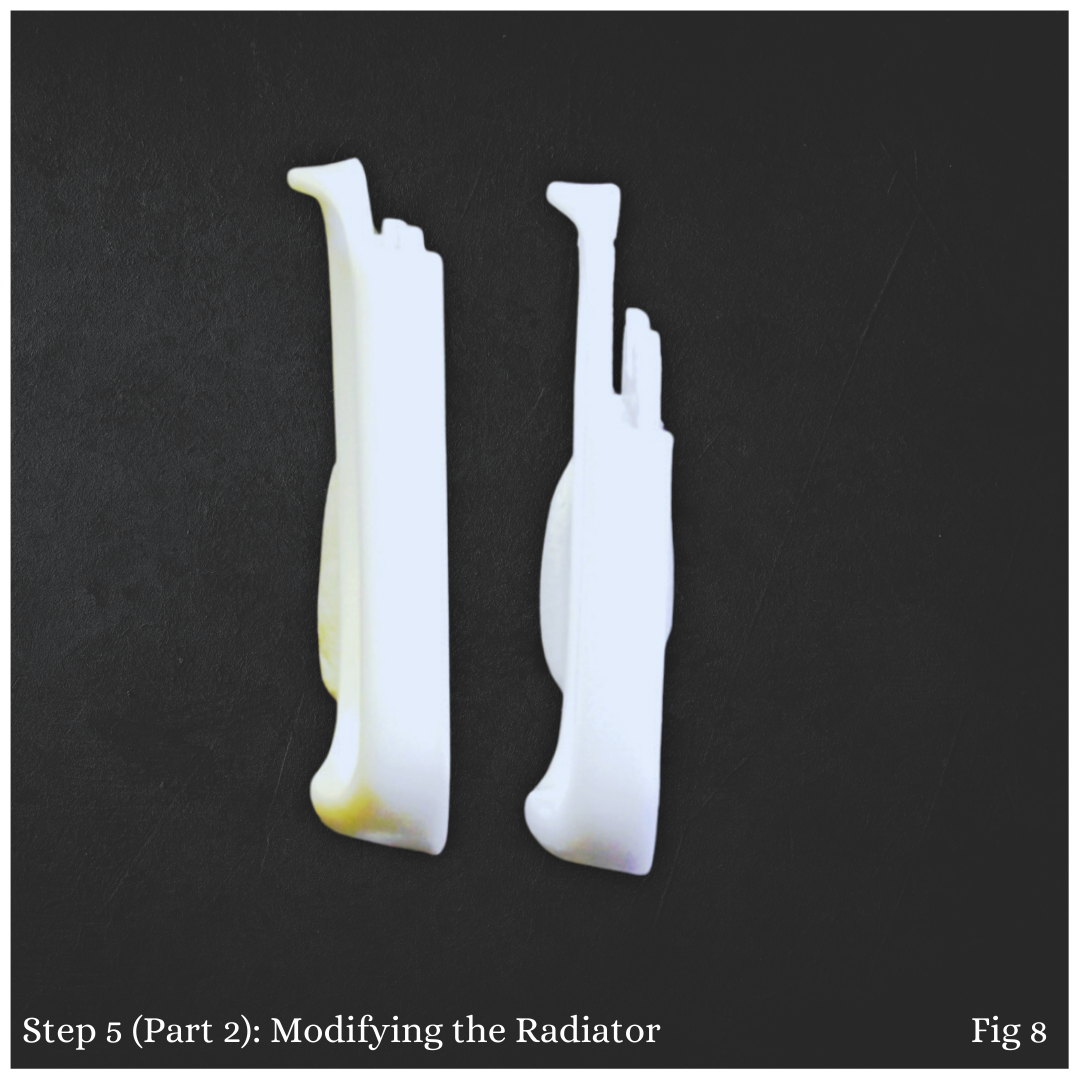
Every detail matters in model building, especially when striving for that perfect custom look for your rod. In this instalment of our rod-building saga, we’ll explore how to lower the suspension and modify the grill shell of our model. We’ll focus on both the front and rear suspension systems and adapt the grill shell and radiator to complement the newly lowered stance achieved through the Zeeing of the frame.
The Importance of Stance The stance of a model can significantly affect its overall appearance. While the Revell kit’s suspension looks good right out of the box, we aim for a meaner, more aggressive look by lowering the vehicle. This can be achieved with some simple modifications using your hobby knife and/or razor saw.
Step 1: Modifying the Front Suspension
Start by referring to Fig 1. Here, we’ll make targeted cuts to achieve our desired lowered stance.
- Identify Modification Areas: Remove the shaded areas in red from the mounting tab on top of the spring and the bump stops on the axle. The right side of the axle in the photo demonstrates the modified section, while the left side shows the areas still needing attention.
- Adjusting the Shocks: To ensure the front shocks work harmoniously with the modified suspension, trim the frame ends of the front shocks (details not shown in the figure).
Step 2: Simplifying the Rear Axle Modification
Modifying the rear axle is a straightforward process that will lower the back end closer to the ground.
- Cutting the Axle Airbags: As illustrated in Fig 2, simply remove a portion from the top of each axle airbag. Again, the right side of the axle has been modified, while the left remains unaltered, marked in red.
- Shortening the Rear Shocks: Just like with the front suspension, you’ll need to shorten the rear shocks to accommodate the lowered axle.
Step 3: The Chain Reaction of Modifications
In rod building, there’s an unwritten rule that states one modification often leads to the next. After lowering the rear suspension and attaching the wheels, I found that the insides of the tyres were jamming against the sides of the body. Widening the Rear Axle To create enough clearance for the tyres, I decided to widen the rear axle:
- Cutting the Wheel Retainer: I cut off the wheel retainer at the end of the axle.
- Inserting a Spacer: A 2mm plastic spacer was inserted, and then I reattached the axle retainer. Fig 3 shows the modified axle with the spacer shaded in black, while Fig 4 compares the final product (top) to the stock axle (bottom), highlighting the difference.
Step 4: Modifying the Grill Shell
Now that the suspension is sorted, our next step is to modify the grill shell and radiator to fit the newly lowered body. Lowering the Grill Shell Due to the Zeeing process, the grill shell needs to be adjusted so it doesn’t sit higher than the cowl after assembly.
- Removing the Inner Strip: Remove a 3mm strip from the inner part of the shell, as shown in Fig 5, while keeping the bottom part with the mounting tabs intact.
- Reattaching the Bottom Part: After removing the strip, reattach the bottom part at its new location.
- Comparative Views: Fig 6 illustrates the modified grill shell (right) next to the stock part (left).
Step 5: Modifying the Radiator
Next, we turn our attention to the radiator:
- Cutting the Bottom: Remove the bottom part of the radiator up to the lower electric fan mount and smooth out any rough edges with a sanding stick or file. Fig 7 shows the modified radiator (right) next to the stock radiator (left).
- Final Adjustments: Remove the bottom mounting of the electric fan from the radiator, then reattach the bottom of the radiator.
- Dry Fit: Dry fit the assembly, and tweak the front cross member with a file or sanding stick until everything fits snugly. Fig 8 shows the modified item (right) compared to the stock item (left).
Share Your Progress
We’d love to see how your project is coming along! Send us your build photos, and feel free to ask any questions you have along the way. We’ll feature select builds and answers in future articles.
Conclusion
These modifications are essential for achieving the desired stance and contribute to your model's overall aesthetics. In our next instalment, we will tackle chopping the top and adding scale weld seams for that rough, ratty look that defines the true essence of a rod.

